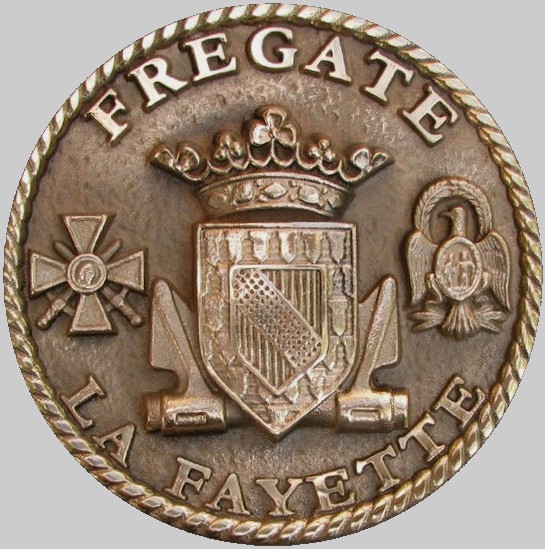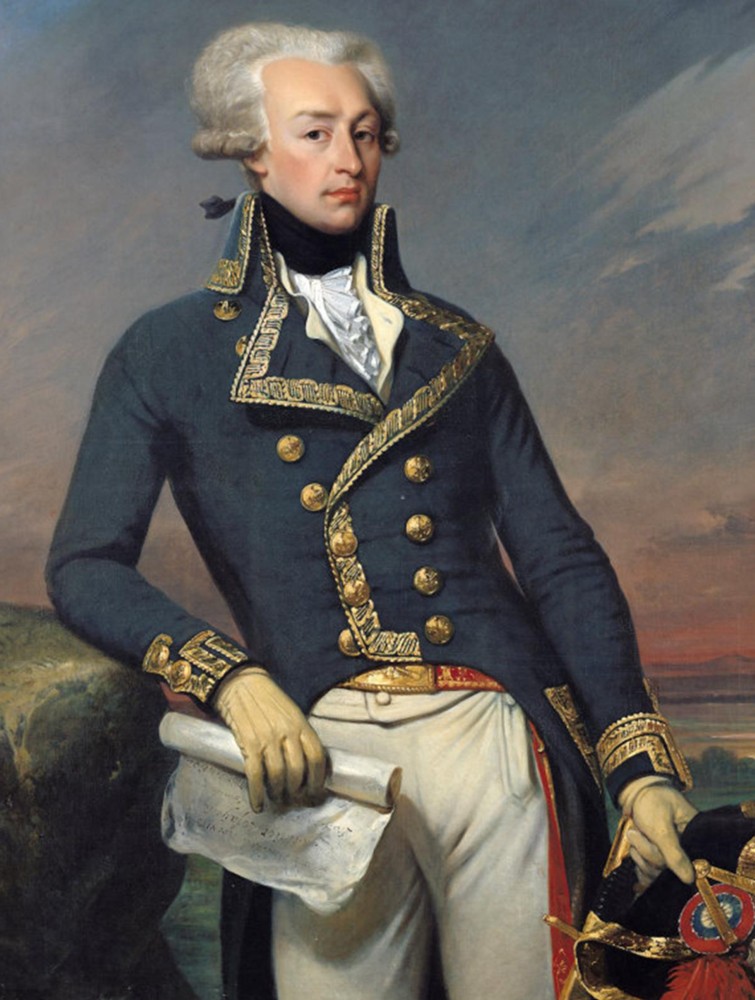 |
||
|
HOME
|
US Navy -
ships
|
US Navy - air
units
|
USMC - air
units
|
International
Navies
|
Weapon Systems
|
Special Reports |
||
|
French Navy / Marine Nationale
-
Frigate F 710 FS La Fayette |
||
|
||
| 03/22 | ||
|
Type,
class: La Fayette class Frigate (Frégate
Légère Furtive) Builder: DCN, Lorient, Brittany, France STATUS: Laid down: December 15, 1990 Launched: June 13, 1992 Commissioned: March 22, 1996 IN SERVICE Homeport: Toulon Namesake: Marquis de Lafayette (1757-1834) Technical Data: see INFO > La Fayette class Frigate |
||
| images | ||
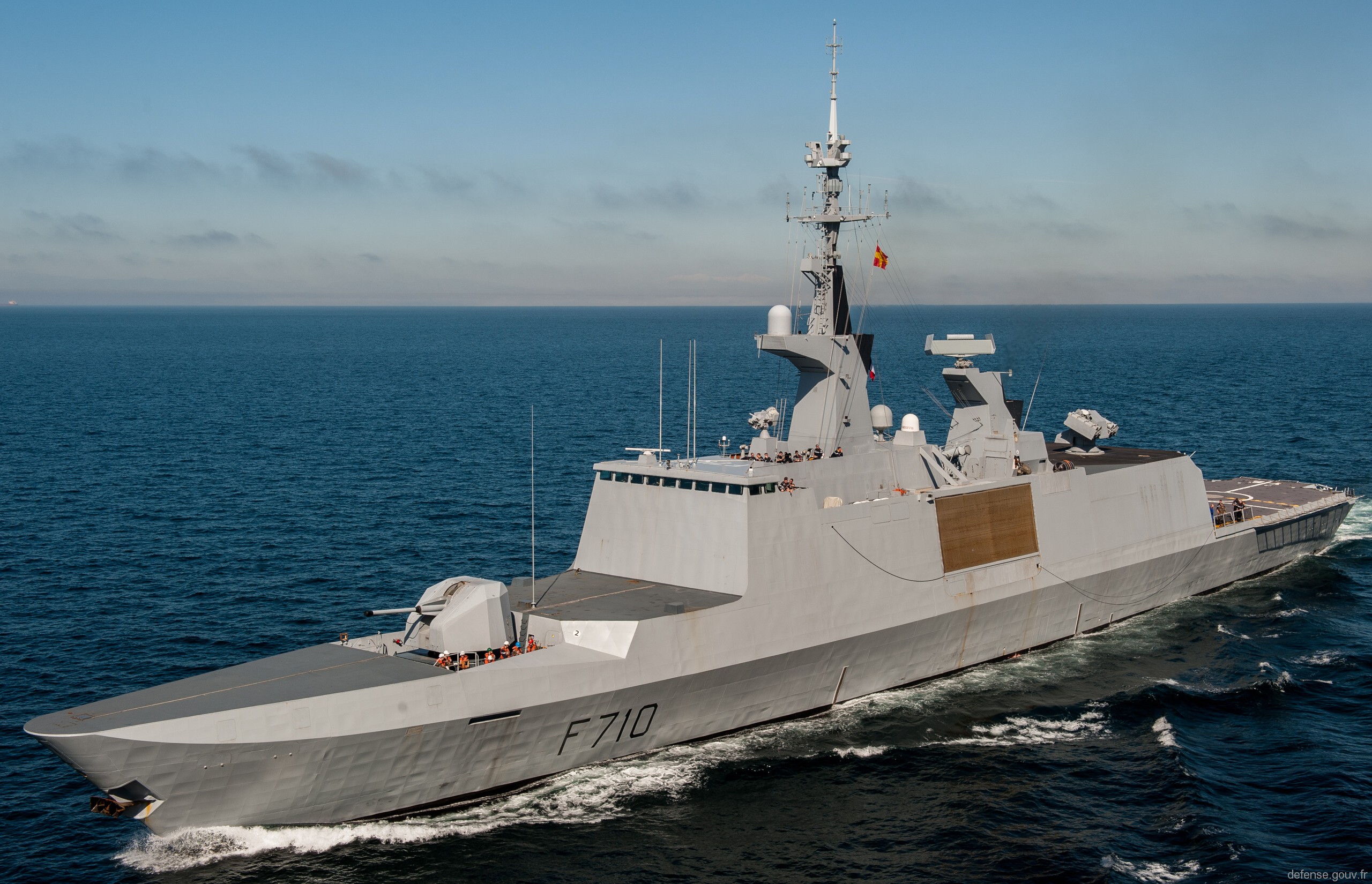 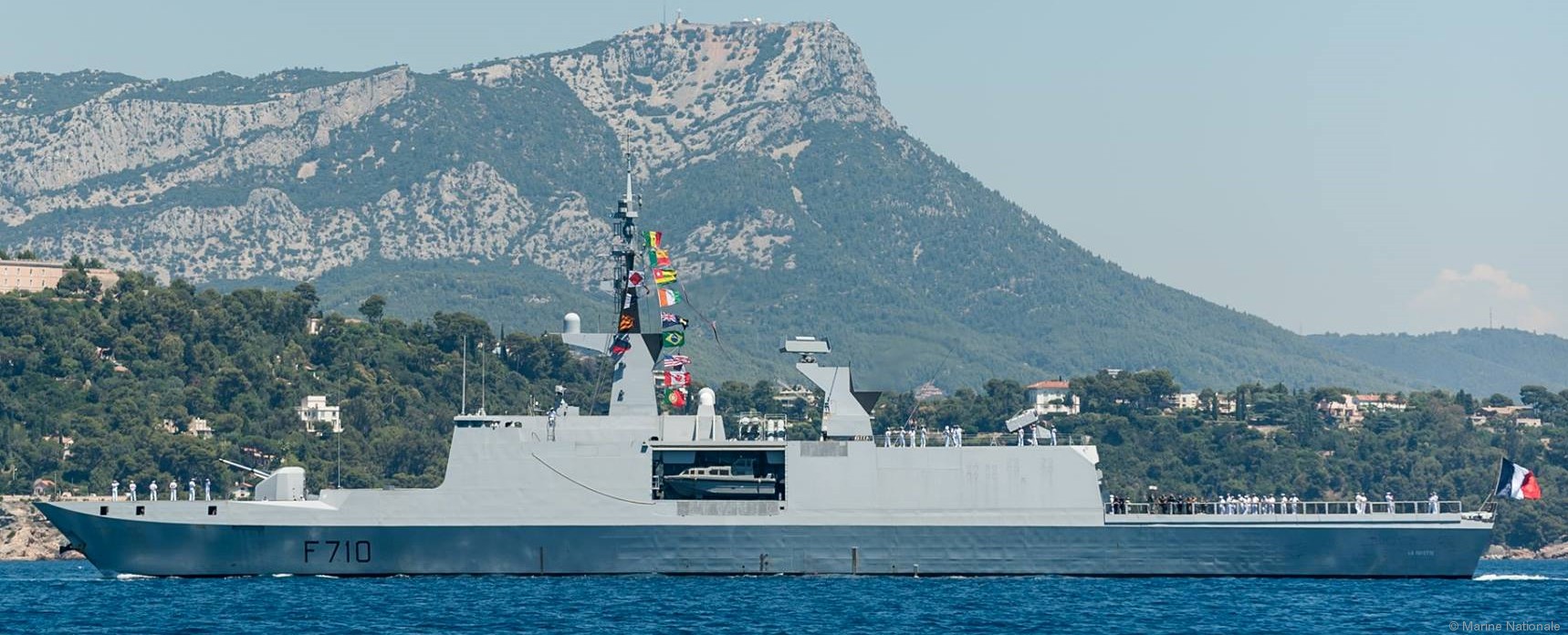 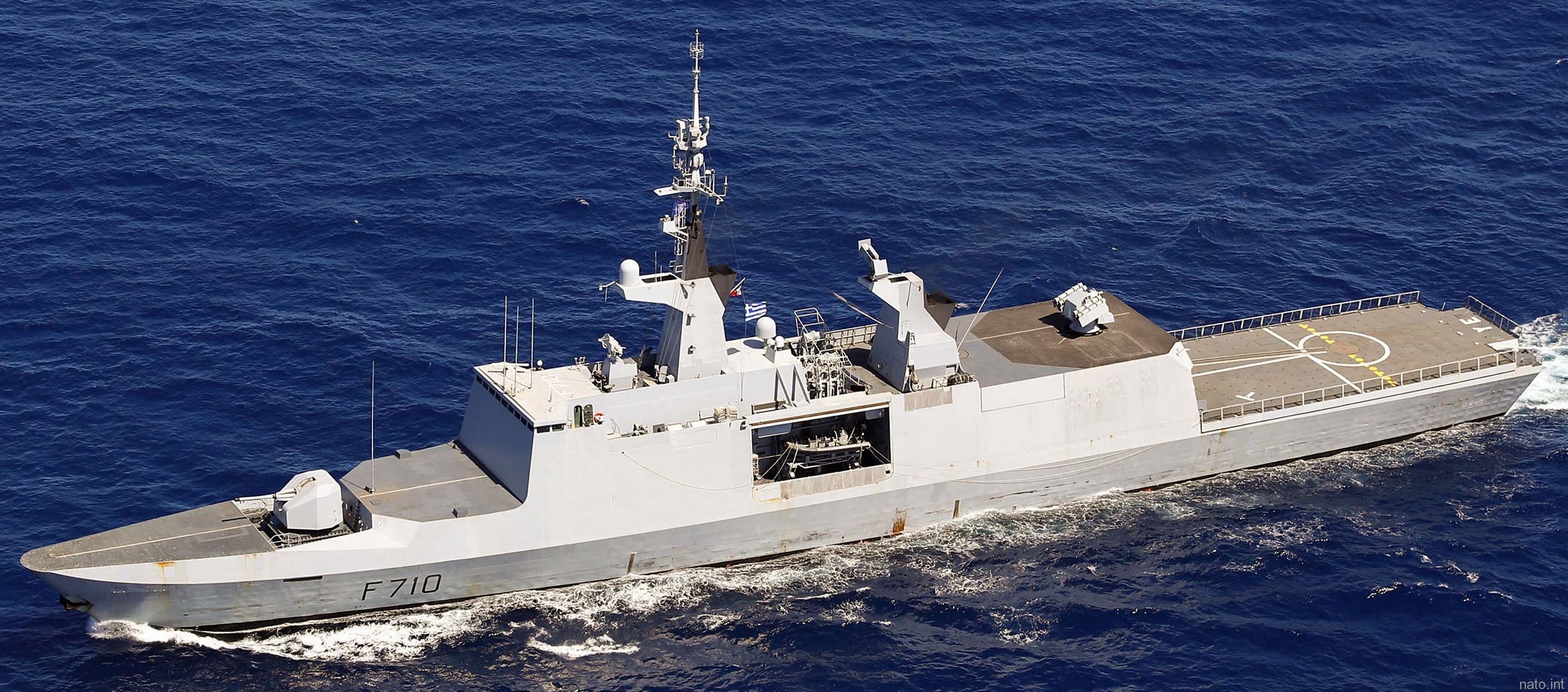 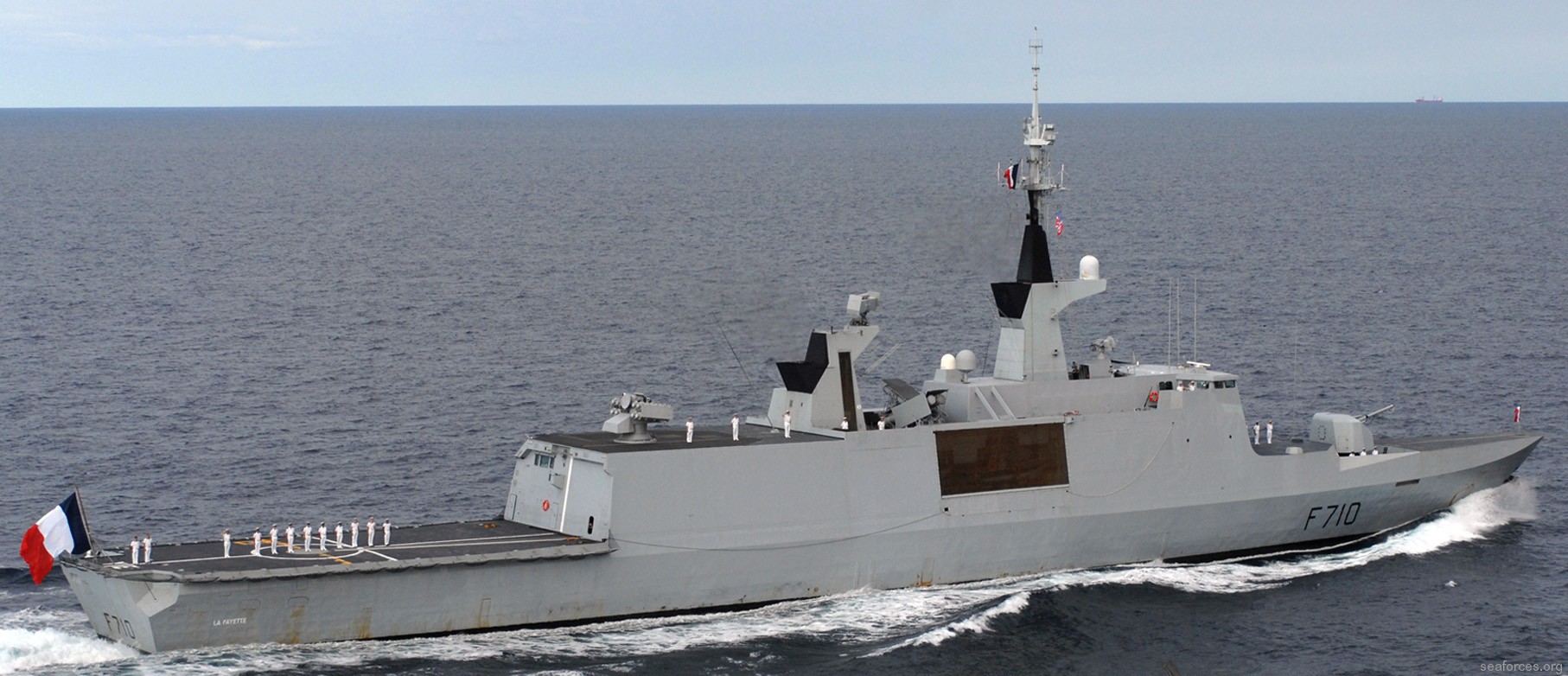 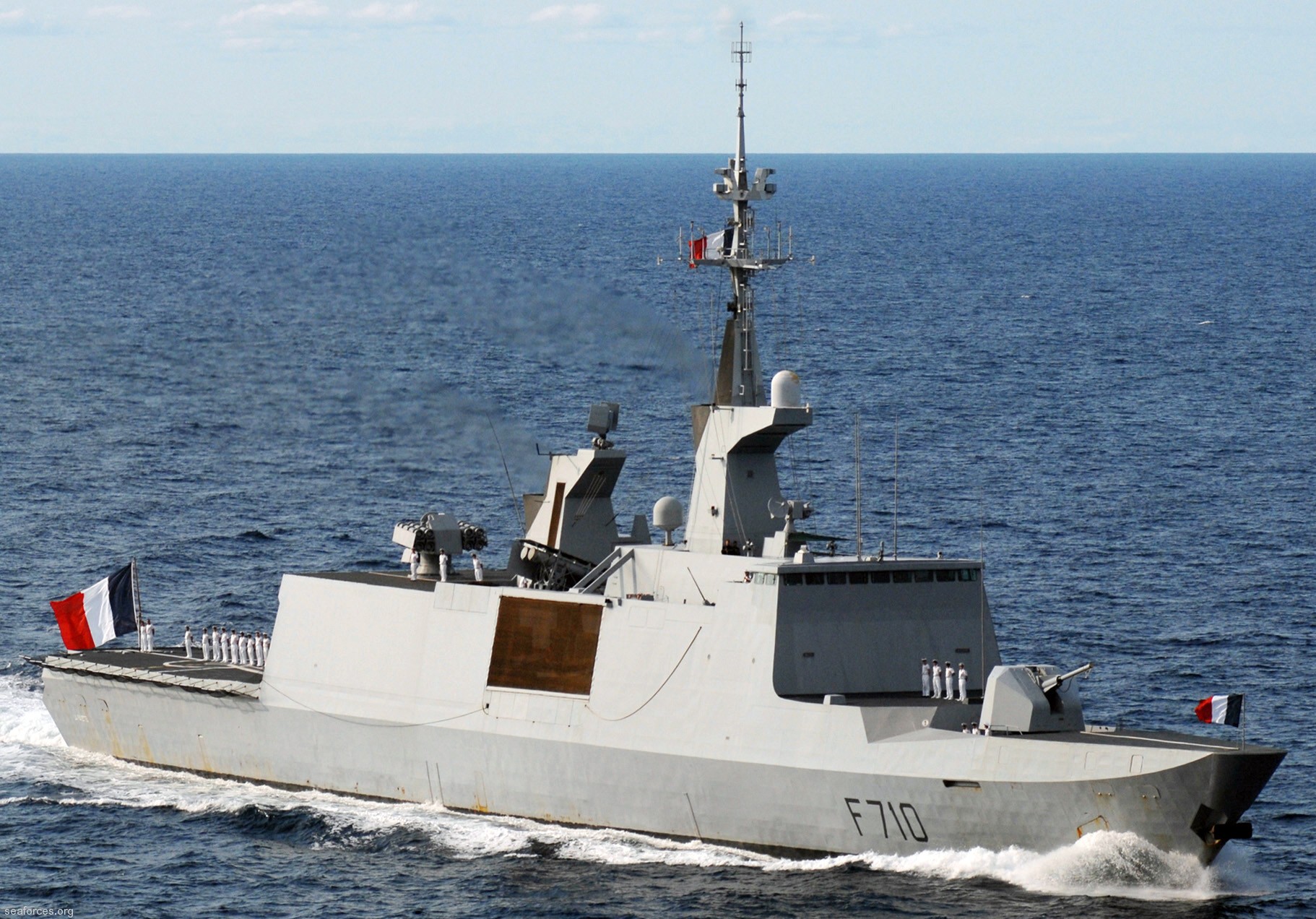 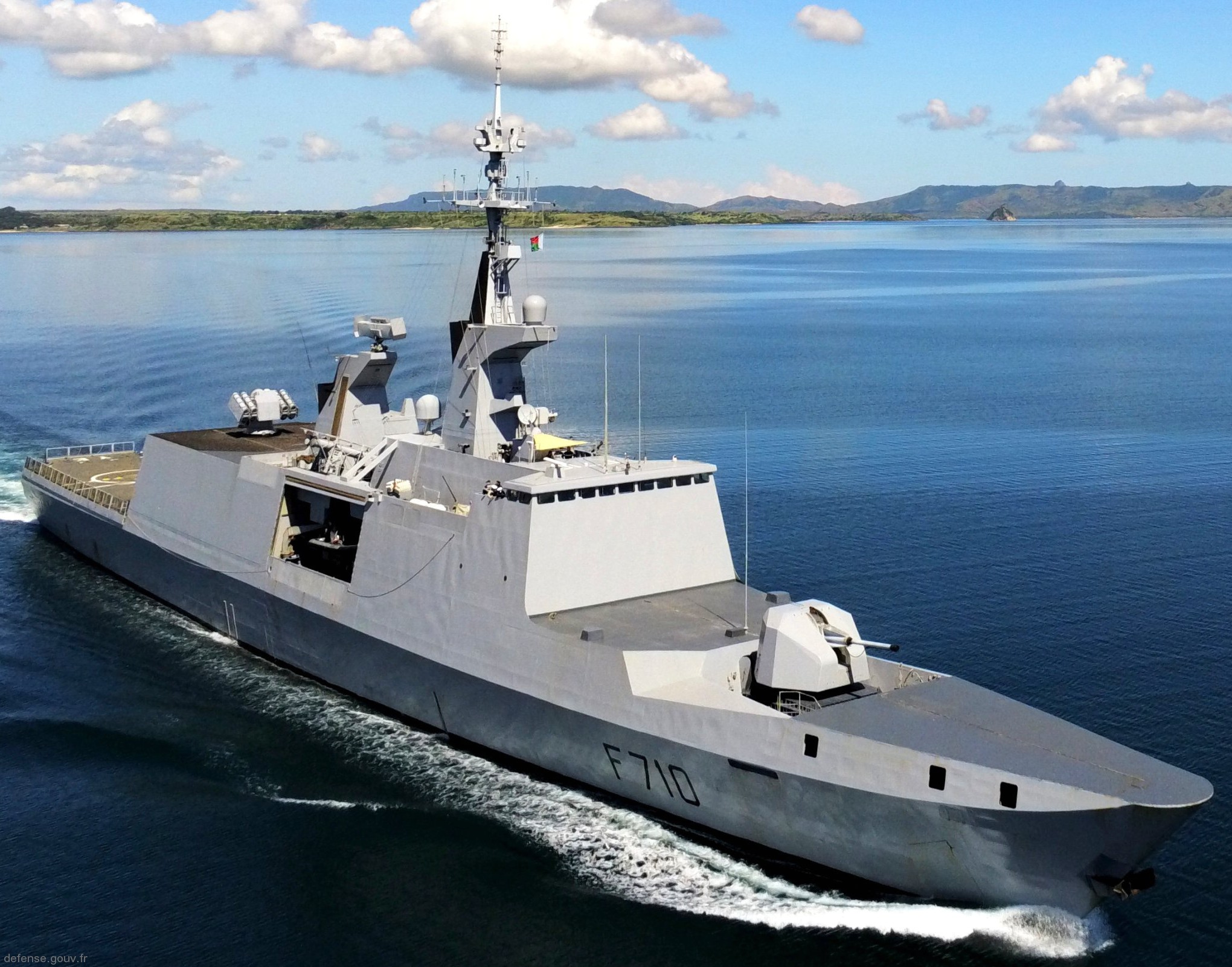 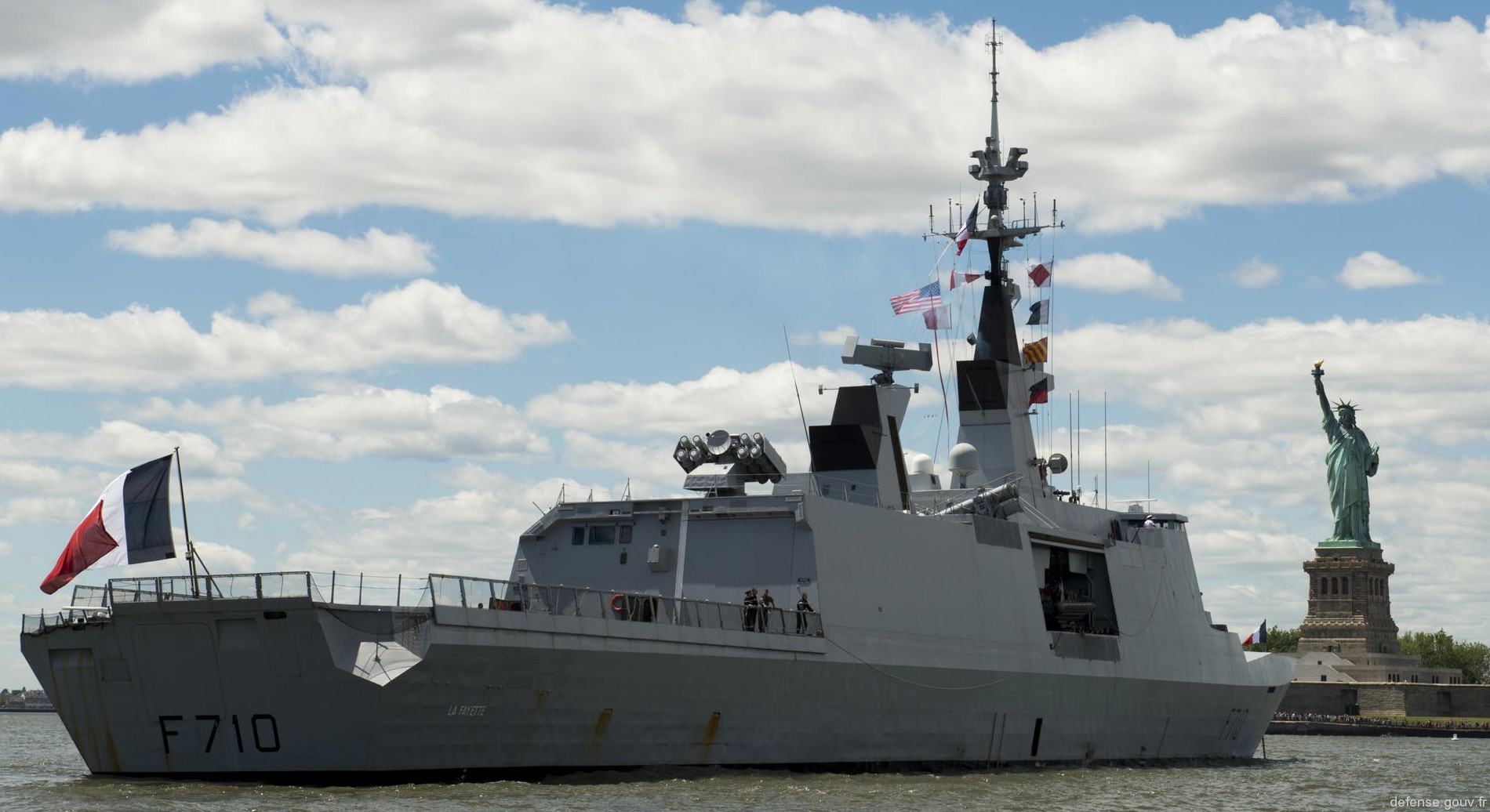 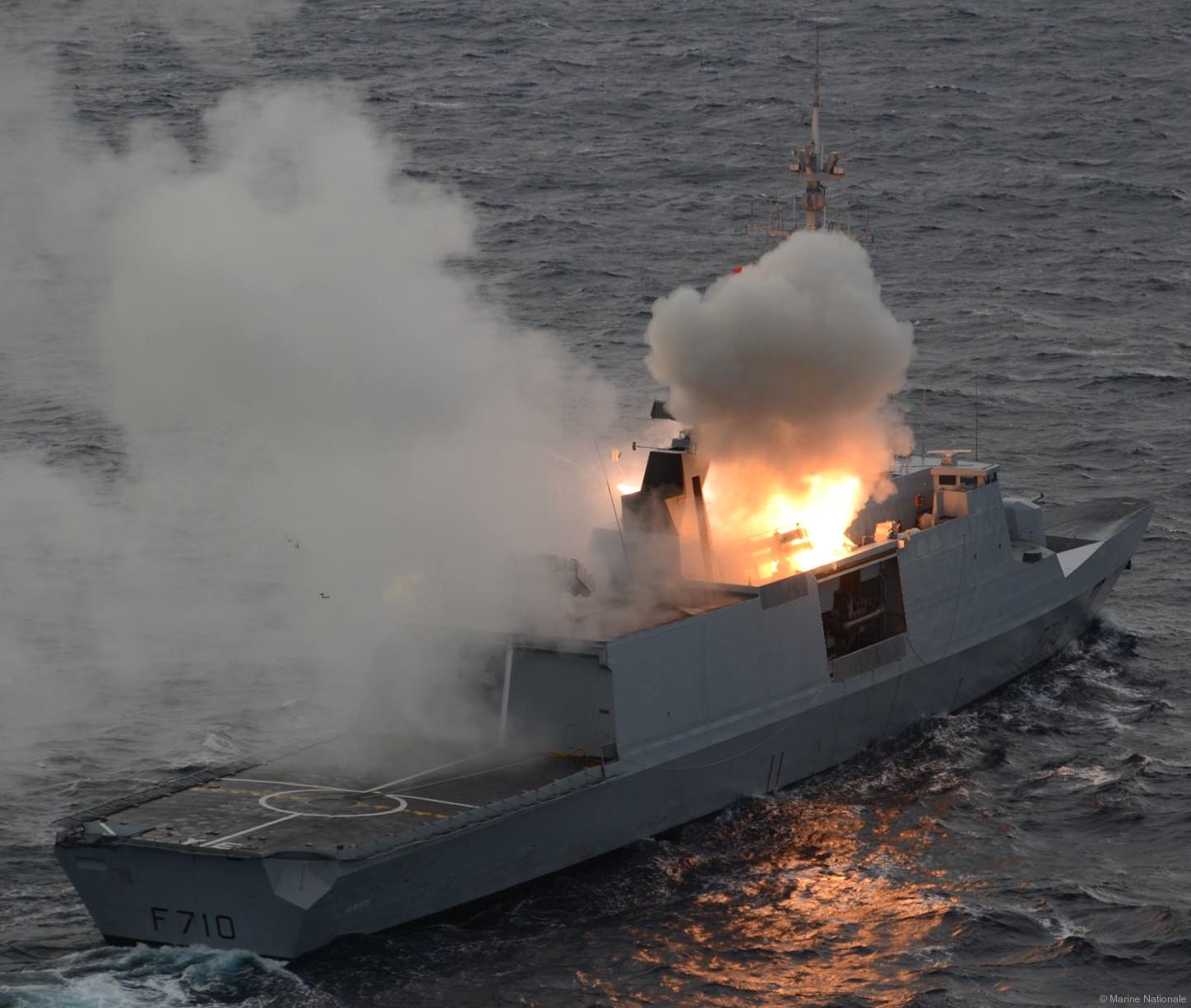 firing an Exocet MM40 SSM missile 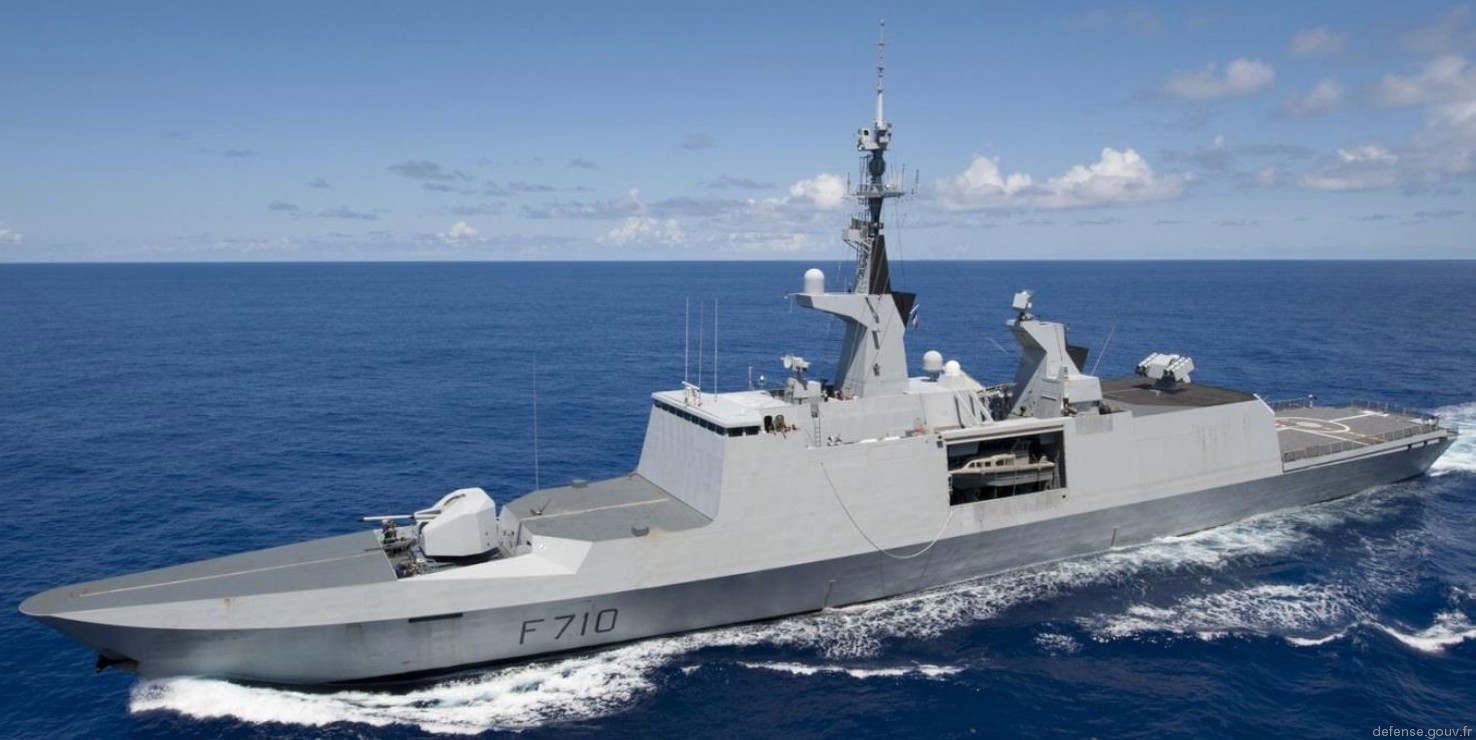 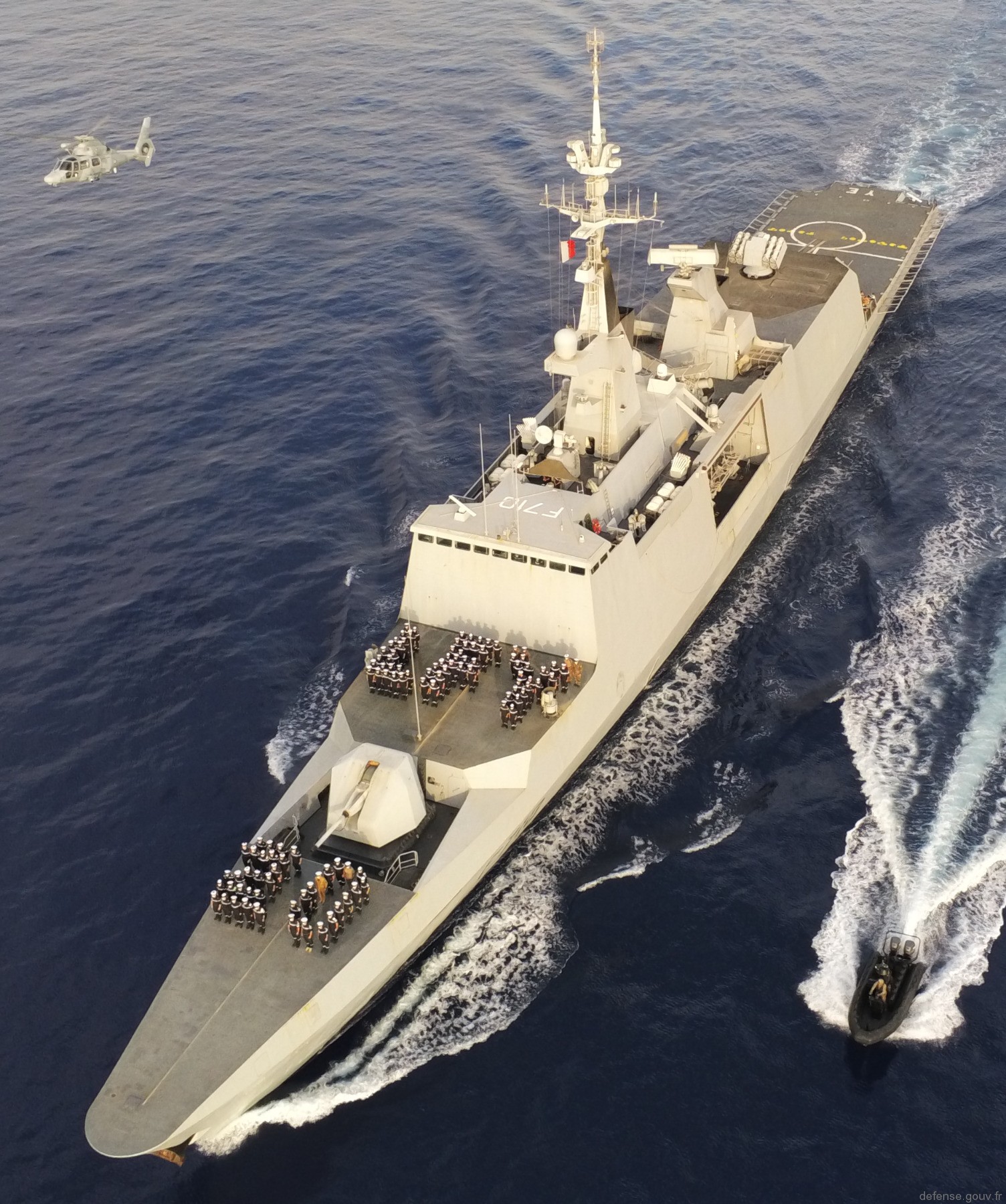 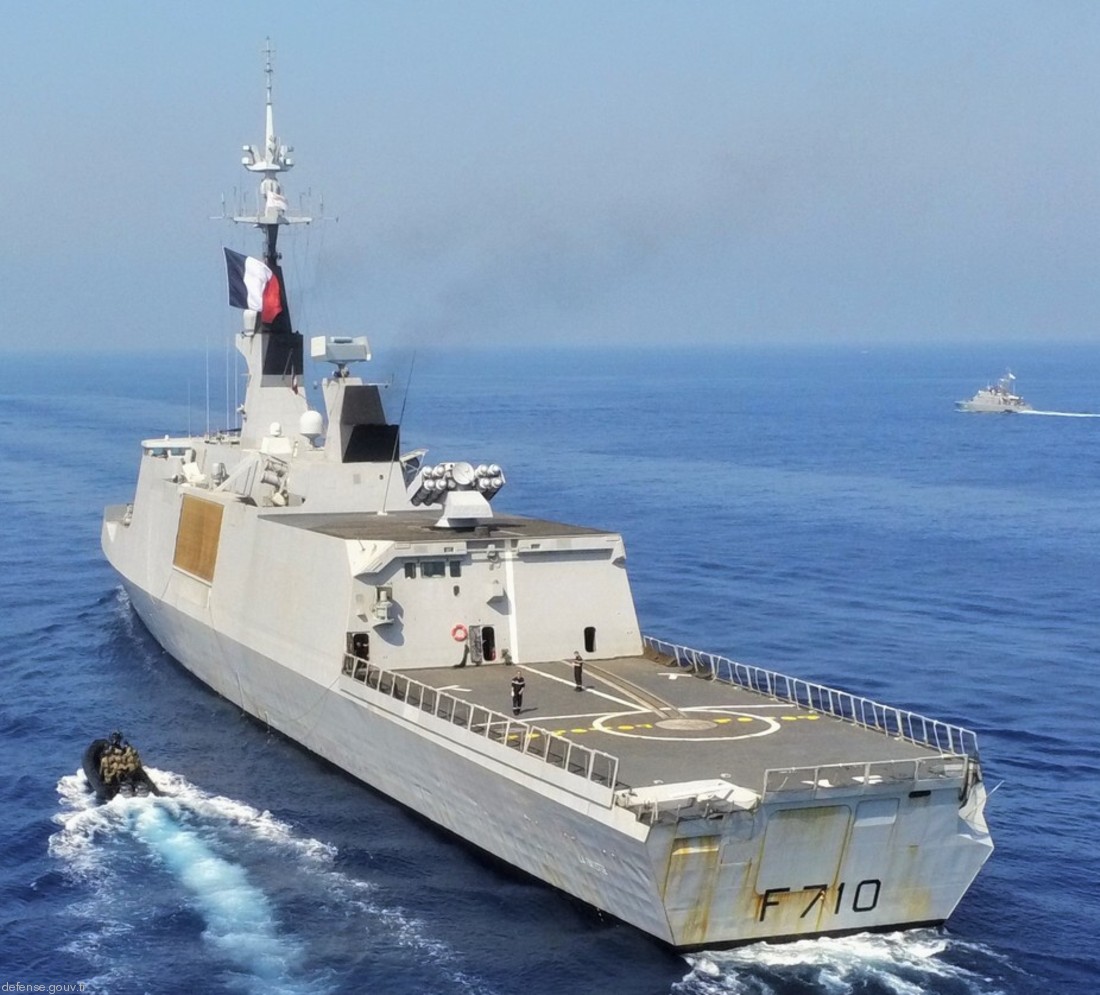 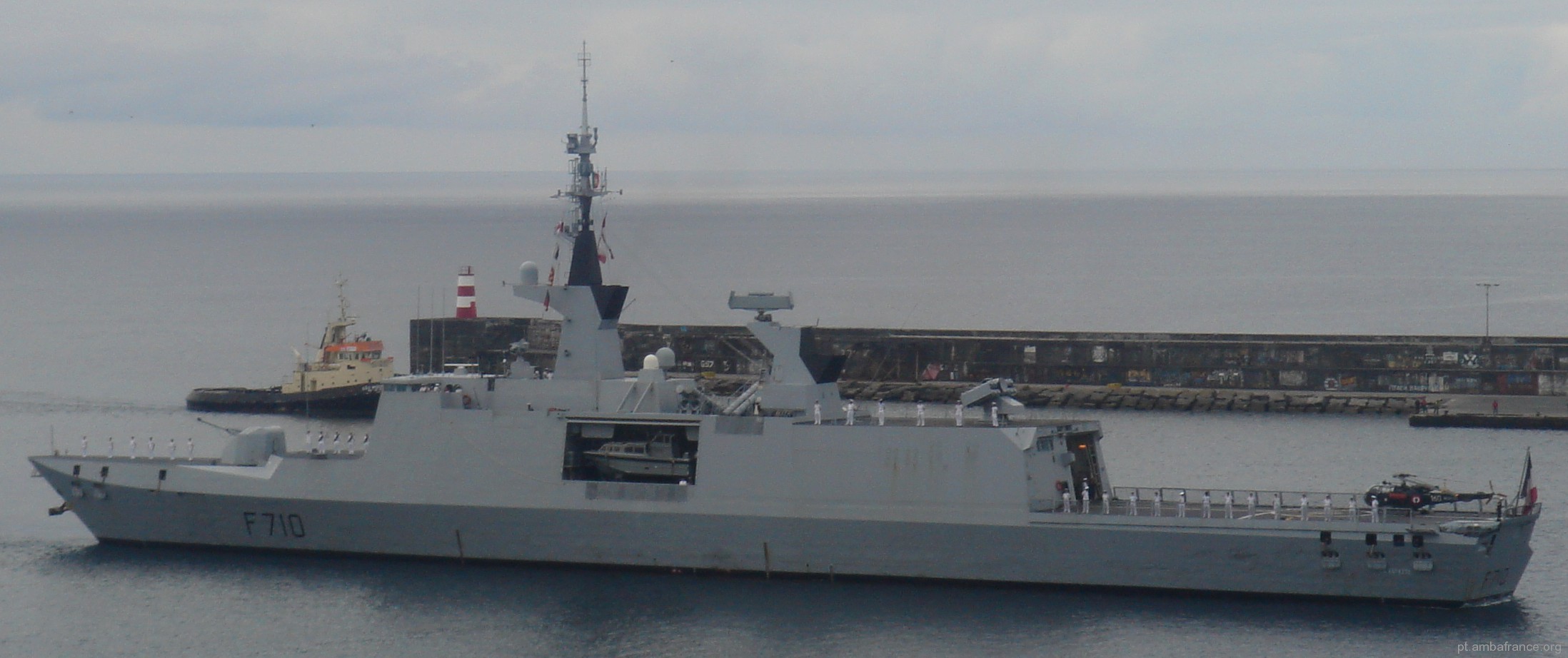 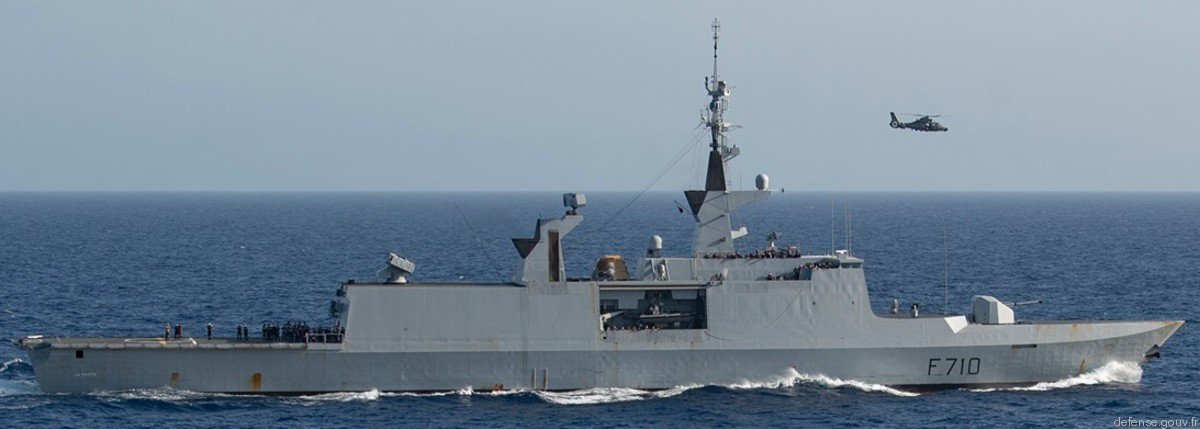 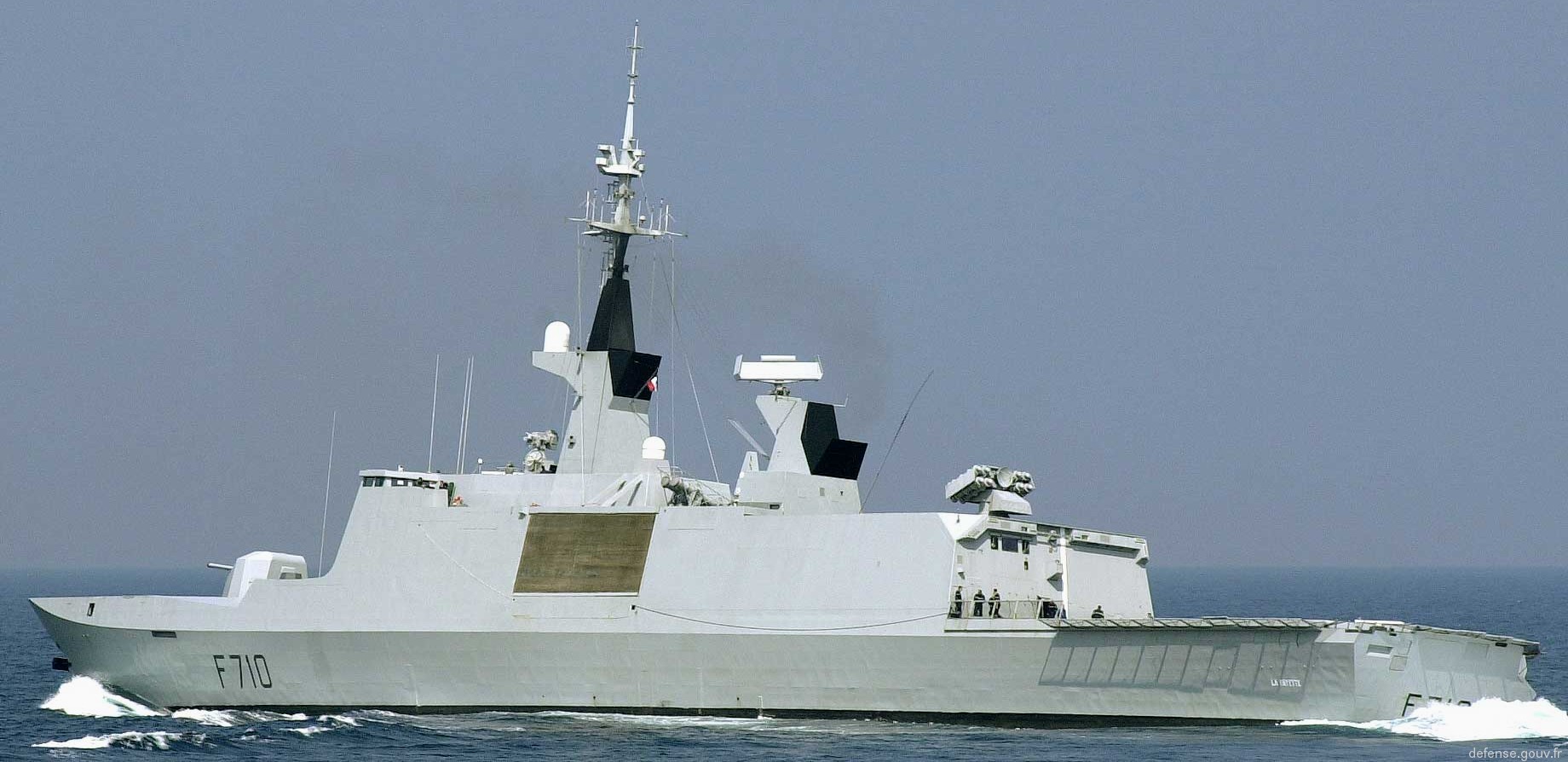 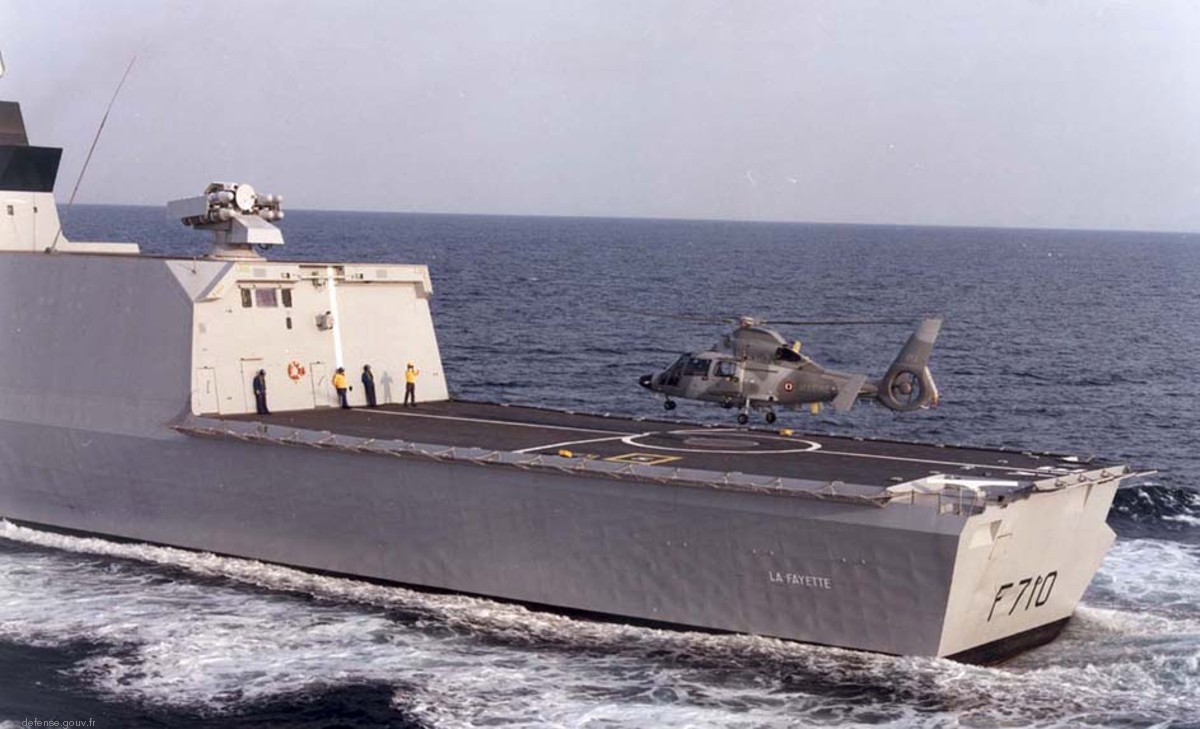 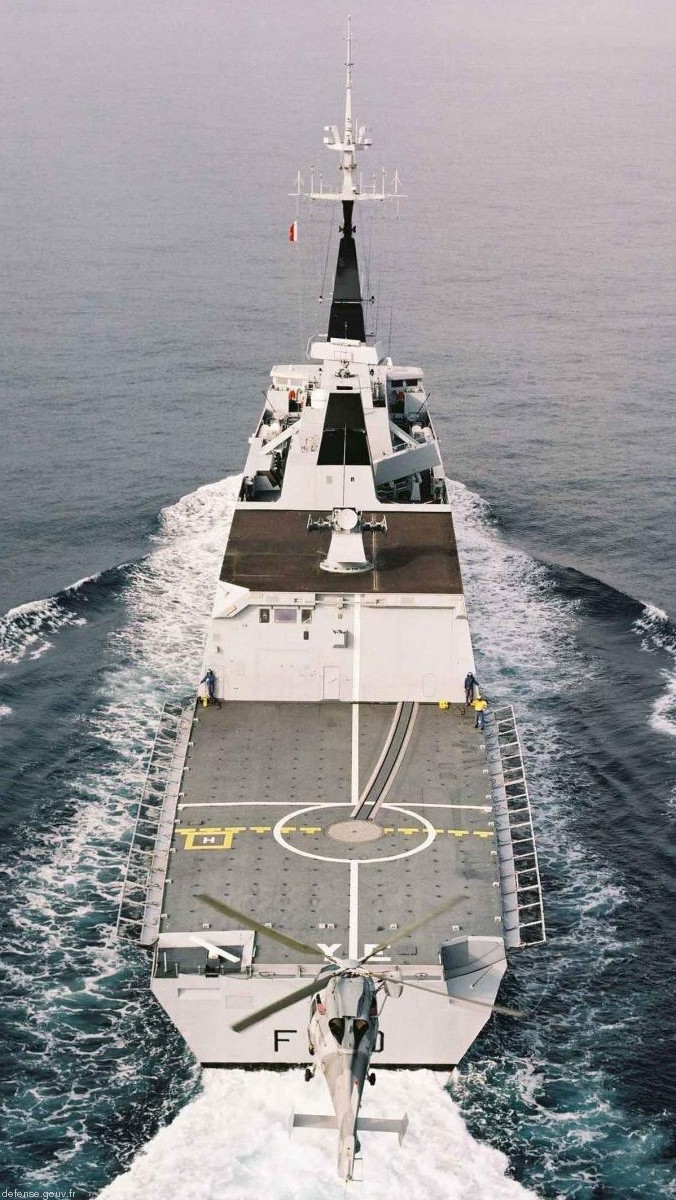 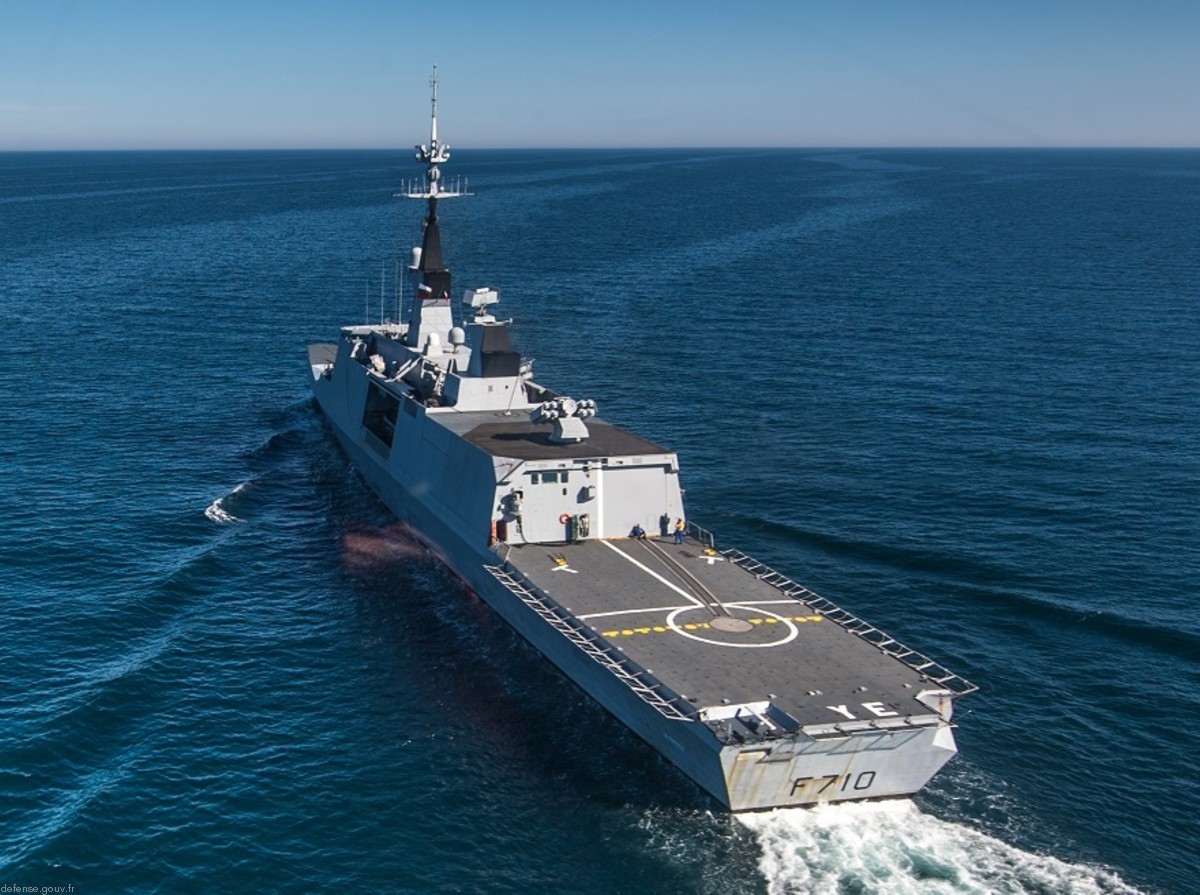 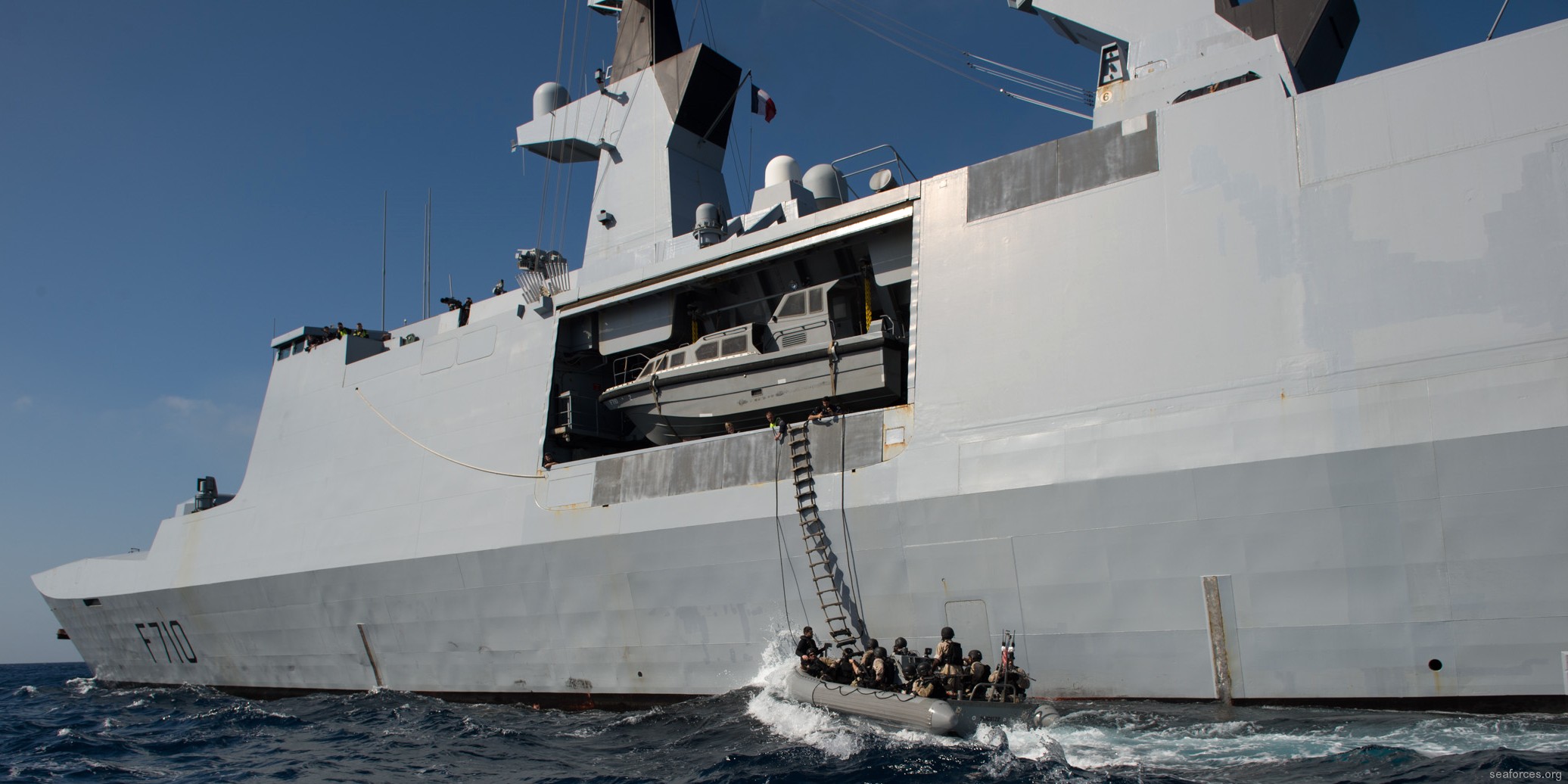 |
||
|
FS La Fayette (F 710): In September 2002, La Fayette joined Task Force 473 to take part in Operation Heracles. This mission was to control maritime traffic in the Arabian Sea to prevent possible Taliban escapes by sea. In August 2006, during the war in Lebanon, La Fayette took part alongside BPC Mistral, the TCD Siroco, Frigate Jean Bart and Frigate Jean de Vienne in the evacuation of French nationals. In 2007, La Fayette traveled to the United States to celebrate the 250th anniversary of the birth of the Marquis de La Fayette. In 2011, she operated off Libya as part of Operation Harmattan and fired 378 rounds of 100 mm ammunition. La Fayette began a major life extension upgrade in October 2021 which is to be completed over a nine month period. The upgrade is designed to permit the frigate to operate through the 2020s and into the 2030s and incorporates the addition of hull-mounted sonar, improved point air defence systems (SADRAL instead of the Crotales), the CANTO anti-torpedo countermeasures system, as well as the latest variant of the Exocet anti-ship missile. The frigate is to return to service in mid-2022 and remain active until 2031. |
||
|
|
||
|
Marie-Joseph Paul Yves Roch Gilbert du Motier, Marquis de
Lafayette (6 September 1757 - 20 May 1834) ... known in the United States simply as Lafayette, was a French aristocrat and military officer who fought in the American Revolutionary War, commanding American troops in several battles, including the Siege of Yorktown. After returning to France, he was a key figure in the French Revolution of 1789 and the July Revolution of 1830. Lafayette was born into a wealthy land-owning family in Chavaniac in the province of Auvergne in south central France. He followed the family's martial tradition and was commissioned an officer at age 13. He became convinced that the American cause was noble in its revolutionary war, and he traveled to the New World seeking glory in it. He was made a major general at age 19, but he was initially not given American troops to command. He was wounded during the Battle of Brandywine but still managed to organize an orderly retreat, and he served with distinction in the Battle of Rhode Island. In the middle of the war, he sailed for home to lobby for an increase in French support. He returned to America in 1780 and was given senior positions in the Continental Army. In 1781, troops under his command in Virginia blocked forces led by Cornwallis until other American and French forces could position themselves for the decisive Siege of Yorktown. Lafayette returned to France and was appointed to the Assembly of Notables in 1787, convened in response to the fiscal crisis. He was elected a member of the Estates-General of 1789, where representatives met from the three traditional orders of French society: the clergy, the nobility, and the commoners. After forming the National Constituent Assembly, he helped to write the Declaration of the Rights of Man and of the Citizen with Thomas Jefferson's assistance. This document was inspired by the United States Declaration of Independence and invoked natural law to establish basic principles of the democratic nation-state. He also advocated the end of slavery, in keeping with the philosophy of natural liberty. After the storming of the Bastille, he was appointed commander-in-chief of France's National Guard and tried to steer a middle course through the years of revolution. In August 1792, radical factions ordered his arrest, and he fled into the Austrian Netherlands. He was captured by Austrian troops and spent more than five years in prison. Lafayette returned to France after Napoleon Bonaparte secured his release in 1797, though he refused to participate in Napoleon's government. After the Bourbon Restoration of 1814, he became a liberal member of the Chamber of Deputies, a position that he held for most of the remainder of his life. In 1824, President James Monroe invited him to the United States as the nation's guest, and he visited all 24 states in the union and met a rapturous reception. During France's July Revolution of 1830, he declined an offer to become the French dictator. Instead, he supported Louis-Philippe as king, but turned against him when the monarch became autocratic. He died on 20 May 1834 and is buried in Picpus Cemetery in Paris, under soil from Bunker Hill. He is sometimes known as "The Hero of the Two Worlds" for his accomplishments in the service of both France and the United States. source: wikipedia
|
||
| patches + more | ||
|
|
seaforces.org
|
French
Navy start page
| |
